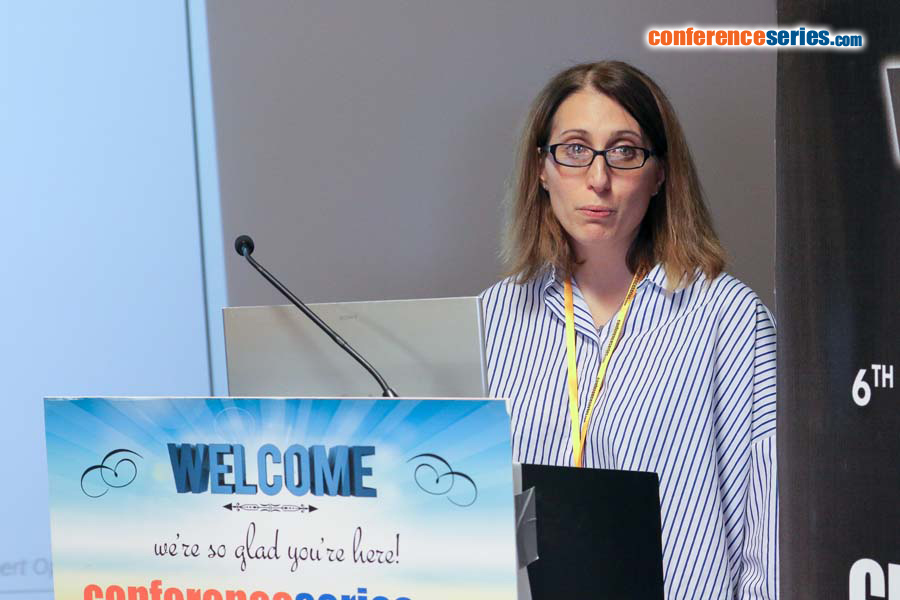
Fabiola Porta
University of Basel, Switzerland
Title: Enzyme triggered nanomaterial for cancer therapy
Biography
Biography: Fabiola Porta
Abstract
Polymer vesicles are attracting much attention as alternative nano-delivery system to implement drug targeting strategies. Polymersomes have several interesting features. For instance, ease of chemical modification of the polymer chains can be used to modulate their tissue specificity and organ distribution. A wide variety of polymers is available, however a good candidate for pharmaceutical formulations is the di-block copolymer poly(dimethylsiloxane)-b-poly(2methyloxazoline) (PDMS-PMOXA). This polymer is formed by two subunits which are FDA approved for the development of novel nanomaterials with a potential human use. In our work, we are developing a responsive nanomaterial for the treatment of breast cancer. In order to develop a targeted
delivery system a very good understanding of the cancer biology is necessary. In particular cancer biomarker are of particular interest due to their specificity for cancer cells. The enzyme family of cathepsins is highly expressed in certain type of cancers as breast tumor. Moreover, they are responsible for the degradation of proteins in the lysosomes. The elevate expression of these enzymes in tumors is an evidence of the increased metabolism of cancer cells. For this reason, these enzymes are a very interesting target for the development of a novel nanomaterial. In this work, we are presenting a peptide cross linked polymeric nanoparticle with the main goal to encapsulate anticancer compounds and to release them only upon activation of the system by cathepsin B.
Recent Publications
1.Blanco B, Prado V, Lence E, Otero J M, Garcia-Doval C, van Raaij M J, Llamas-Saiz A L, Lamb H, Hawkins A R, González-Bello C (2013) Mycobacterium tuberculosis shikimate kinase inhibitors: Design and simulation studies of the catalytic turnover. J. Am. Chem. Soc. 135: 12366-12376.
2.Prado V, Lence E, Maneiro M, Vázquez-Ucha J C, Beceiro A, Thompson P, Hawkins A R, González-Bello C (2016) Targeting the motion of shikimate kinase: Development of competitive inhibitors that stabilize an inactive open conformation of the enzyme. J. Med. Chem. 59: 5471-5487.
3.Prado V, Lence E, Thompson P, Hawkins A R, González-Bello C (2016) Freezing the dynamic gap for selectivity - motion-based design of inhibitors of the shikimate kinase enzyme. Chem. Eur. J. 22: 17988-18000.
4.Prado V, Lence E, Vallejo J A, Beceiro A, Thompson P, Hawkins A R, González-Bello C (2016) Study of the Phosphoryl-transfer mechanism of shikimate kinase by NMR spectroscopy. Chem. Eur. J. 22: 2758-2768.
5.González-Bello C (2016) Inhibition of shikimate kinase and type II dehydroquinase for antibiotic discovery: Structure-based design and simulation studies. Curr. Top Med. Chem. 16: 960-977.


